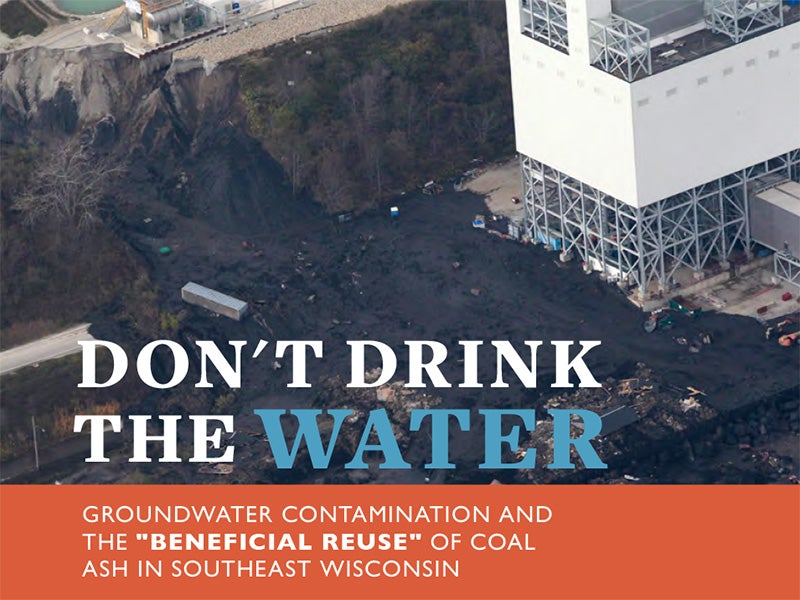New Report: Coal Ash Reuse Threatens Drinking Water Supplies
The use of coal ash as construction fill has contaminated water resources across the nation.

This page was published 11 years ago. Find the latest on Earthjustice’s work.
Clean Wisconsin’s new report, Don’t Drink the Water, demonstrates that coal ash reuse may pose significant public health threats. Today’s report highlights the risks to residents of southeast Wisconsin, where more than one million tons of toxic coal ash has been used in building projects near drinking water wells. The report documents how dangerous chemicals have made their way into the drinking water of hundreds of Wisconsin citizens.
Though it focuses on Wisconsin, the report highlights a national problem. Use of coal ash as construction fill has caused water contamination at sites across the nation. Each year, more than 20 million tons of coal ash are placed as fill without adequate safeguards to prevent hazardous chemicals from entering our water.
Since 2006, Earthjustice has worked to obtain a federal rule to protect communities from the dangerous dumping of toxic ash. In 2012, we brought suit against the U.S. Environmental Protection Agency, which resulted in a consent decree requiring EPA to complete a national coal ash rule—the first-ever federal rule—by Dec. 19, 2014.
There is great reason to be concerned. According to the EPA, coal ash disposed outside of landfills—used as fill and on unpaved roads near residential areas—has contaminated water at more than 16 sites in 9 states. Environmental groups have documented an additional 10 poisoned sites in four more states. This number greatly underestimates the total number of poisoned sites, since monitoring at fill sites is seldom required. Several of these contaminated sites became Superfund sites, where the state or federal government had to provide a safe source of drinking water and require expensive cleanups.
Examples include:
- Town of Pines in Northwest Indiana, where toxic ash used as fill and on unpaved roads contaminated drinking water with arsenic, chromium, boron and molybdenum;
- Battlefield Golf Course in Chesapeake, Virginia, where ash was used to construct a golf course, contaminating nearby waterways with arsenic, lead and chromium; and
- Gambrills, Maryland, where coal ash was used to fill a sand and gravel quarry, resulting in the poisoning of drinking water with arsenic, cadmium, lead and thallium.
The list goes on.
Today, Earthjustice stands with Clean Wisconsin to call for an investigation of wells near coal ash reuse sites for the following reasons: to determine the source of the dangerous chemicals, to identify all wells that are contaminated, and to determine if other coal ash pollutants, like arsenic, lead and hexavalent chromium, are also in water used by Wisconsin residents.
In four short weeks, we hope we can celebrate a solution to the national problem when EPA releases its final coal ash rule. For the safety of all communities, EPA’s upcoming coal ash rule must address the problems described in Don’t Drink the Water. Evidence in Wisconsin and across the nation shows that coal ash, used as fill, threatens the safety of our water. By Dec. 19, we will know whether EPA has fulfilled its duty to keep this toxic industrial waste far from our faucets.
Established in 2008, Earthjustice’s Northeast Office, located in New York City, is at the forefront of issues at the intersection of energy, environmental health, and social justice.